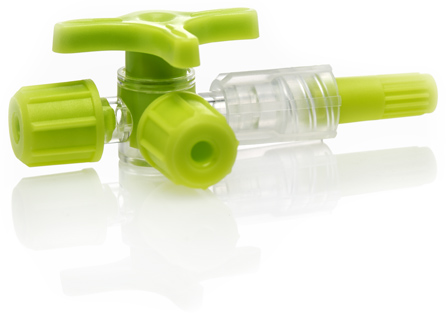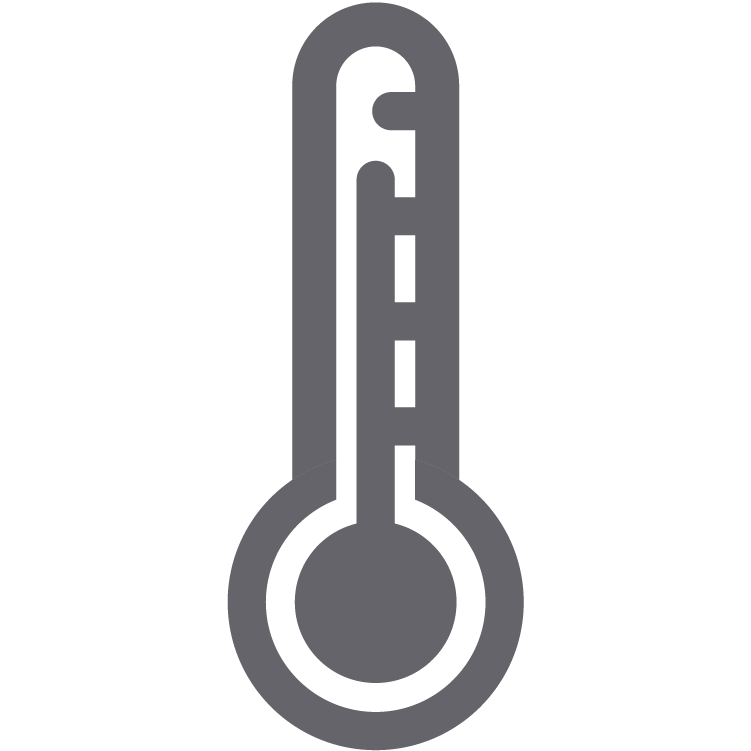4 Keys to Successful Tooling Design
To develop successful injection molding applications, it’s crucial to consider all aspects of design early on in the process. Tooling design review is an important step in helping to determine what type of gating system and other factors are the right fit for your device.
Here are four tooling design tips for injection molding with Eastman TritanTM copolyester:
Proper gating selection
Here are four tooling design tips for injection molding with Eastman TritanTM copolyester:
Proper gating selection
- Most conventional cold gating styles work well with TritanTM copolyesters, including sub, pin, fan, edge, sprue, and diaphragm gates. Self-degating gate styles, such as sub gates or pin gates, typically require smaller gate sizes balancing the ability to limit pressure drop with degating.
- For hot runner systems, valve gates should be used. Critical design features of TritanTM valve gate systems include thermal control and independent water supply.
- Tritan™ copolyesters require good thermal control throughout the cavity for optimal processing.
- Read more about 4 Keys to Successful Tooling Design
- Log in or register to post comments
This Old Mold 2 - Polishing
Tips for optimizing existing molds to run Eastman Tritan™ copolyester
Eastman Tritan™ copolyester provides excellent gloss and picks up mold finish very well. When using it in a mold designed for other plastics, however, there are factors you need to consider in order to achieve success.
Here are some guidelines for polishing Eastman Tritan™ copolyester:
It’s important to keep in mind that surfaces polished smoother than required for ejection add to mold cost. In most cases, highly polished surfaces can hinder ejection if there is a vacuum drawn in low or no draft areas. Where no vacuum is drawn, polished surfaces generally eject better.
Eastman Tritan™ copolyester provides excellent gloss and picks up mold finish very well. When using it in a mold designed for other plastics, however, there are factors you need to consider in order to achieve success.
Here are some guidelines for polishing Eastman Tritan™ copolyester:
- Specify SPI mold finish standards.
- Specify surfaces smooth enough to minimize ejection force.
- Specify final polish in the direction of draw to minimize scuffing.
- Add a light 320 dry grit blasting (SPI B3 finish) to drafted walls to reduce the possibility of a vacuum forming during ejection.
It’s important to keep in mind that surfaces polished smoother than required for ejection add to mold cost. In most cases, highly polished surfaces can hinder ejection if there is a vacuum drawn in low or no draft areas. Where no vacuum is drawn, polished surfaces generally eject better.
- Read more about This Old Mold 2 - Polishing
- Log in or register to post comments
Clear or opaque? Applying different grades of Eastman Tritan™ copolyester
 Selecting the right material for your next medical device can be a complicated process. Whether you’re building a fluid management component, blood contact device, or electronic medical device housing, you’ll want to choose a polymer that has the right properties for your application.
Selecting the right material for your next medical device can be a complicated process. Whether you’re building a fluid management component, blood contact device, or electronic medical device housing, you’ll want to choose a polymer that has the right properties for your application.Each medical grade of Eastman Tritan™ copolyester offers a different combination of superior strengths that help optimize performance for specific medical applications. Depending on the needs of your device, you may need a clear or opaque material.
Clear applications
If your device is clear, such as fluid management and IV components, renal devices, or dialyzer housings, you’ll need a material with the following properties:
- Read more about Clear or opaque? Applying different grades of Eastman Tritan™ copolyester
- Log in or register to post comments
This Old Mold 1 - Cooling
Tips for optimizing existing molds to run Eastman Tritan™ copolyester
The success of Eastman Tritan™ copolyester—especially in medical devices—makes more brand owners want to try it. One challenge to even
greater success has been how to use molds designed for other plastics. Sometimes it works fine - sometimes not so much.
Successful molding of any polymer depends on the ability to fill the part, cool the mold, and “freeze” the melted resin. Failure to do
- Read more about This Old Mold 1 - Cooling
- Log in or register to post comments
Thank You for Asking:
following the welder’s recommendations for other amorphous thermoplastics.
- Read more about Thank You for Asking:
- Log in or register to post comments
Mold design—critical factor #5
Tips for a clean release
 The coefficient of friction of copolyesters such as Eastman Tritan™ copolyester is at its highest near the heat deflection temperature (HDT) of the material—and competitive materials generally freeze at a higher temperature than Tritan. Keep this in mind if you’re repurposing a mold that was originally designed for the cooling temperature of another plastic. Parts molded with Tritan must be adequately cooled to withstand ejection forces during demolding.
The coefficient of friction of copolyesters such as Eastman Tritan™ copolyester is at its highest near the heat deflection temperature (HDT) of the material—and competitive materials generally freeze at a higher temperature than Tritan. Keep this in mind if you’re repurposing a mold that was originally designed for the cooling temperature of another plastic. Parts molded with Tritan must be adequately cooled to withstand ejection forces during demolding.
Three mold design and maintenance factors can also help ensure a clean and efficient release:
Draft—Part design features with minimal draft, such as long cores and deep ribs, often result in high ejection forces. The Eastman Design Services team recommends that all wall surfaces have a minimum draft angle of 1° in the direction of draw.
Three mold design and maintenance factors can also help ensure a clean and efficient release:
Draft—Part design features with minimal draft, such as long cores and deep ribs, often result in high ejection forces. The Eastman Design Services team recommends that all wall surfaces have a minimum draft angle of 1° in the direction of draw.
- Read more about Mold design—critical factor #5
- Log in or register to post comments
Mold design — critical factor #4
Gate style, location, and size
 The gate is where it all comes together in injection molding. Mold design and part design. The molten resin and the solid molded product. Aesthetics and mechanical performance.
The gate is where it all comes together in injection molding. Mold design and part design. The molten resin and the solid molded product. Aesthetics and mechanical performance.
Skillful decisions about gate style, location, and size early in the mold and part design process can pay big dividends when it is time to start molding parts. And the benefits pay off in greater part performance and reliability.
Overriding considerations—aesthetics and mechanical properties
Regardless of gating type, location, or size, these two factors will drive most decisions made regarding gating:
Aesthetics
The gate on an injection molded part leaves a “witness,” or a vestige, where the part is separated from the runner system. This is considered an appearance defect and is typically hidden in an area of the part where it will not be obvious.
Skillful decisions about gate style, location, and size early in the mold and part design process can pay big dividends when it is time to start molding parts. And the benefits pay off in greater part performance and reliability.
Overriding considerations—aesthetics and mechanical properties
Regardless of gating type, location, or size, these two factors will drive most decisions made regarding gating:
Aesthetics
The gate on an injection molded part leaves a “witness,” or a vestige, where the part is separated from the runner system. This is considered an appearance defect and is typically hidden in an area of the part where it will not be obvious.
- Read more about Mold design — critical factor #4
- Log in or register to post comments
Overmolding for soft-touch designs
New self-bonding LSR technology created to optimize Eastman Tritan™ copolyesters

The medical industry has a great and growing demand for innovative soft-hard designs in devices, housings, and other equipment. A recent advance in liquid silicone rubber (LSR) technology makes it easier to satisfy this demand with medical grades of Eastman Tritan™ copolyester.
The advantages of Tritan are well-known to readers of this blog. Medical grades of Tritan offer a unique combination of properties including:
• Outstanding resistance to medical disinfectants and solvents
• Excellent impact strength and durability
• Made without BPA and halogens
• Excellent clarity and color retention after sterilization by ethylene oxide (EtO),
e-beam, and gamma irradiation

The medical industry has a great and growing demand for innovative soft-hard designs in devices, housings, and other equipment. A recent advance in liquid silicone rubber (LSR) technology makes it easier to satisfy this demand with medical grades of Eastman Tritan™ copolyester.
The advantages of Tritan are well-known to readers of this blog. Medical grades of Tritan offer a unique combination of properties including:
• Outstanding resistance to medical disinfectants and solvents
• Excellent impact strength and durability
• Made without BPA and halogens
• Excellent clarity and color retention after sterilization by ethylene oxide (EtO),
e-beam, and gamma irradiation
- Read more about Overmolding for soft-touch designs
- Log in or register to post comments
Mold design — critical factor #3
Fill pressure and fill pattern
Fill pressure and fill pattern go hand in hand.
Just as mold design is inextricably linked to part design, reasonable fill pressure and reasonable fill pattern should be evaluated together.
Reasonable fill pressure—excessive fill pressure can create several problems:
• High clamp tonnage requirements
• Reduced life of mold components—due to high stress loading
- Read more about Mold design — critical factor #3
- Log in or register to post comments
Mold design—critical factor #2
Thermal control of cavity surfaces
 Thermal control is critical for injection molding Eastman Tritan™ copolyester. Keeping temperatures cooled below the heat deflection temperature (HDT) of Tritan helps ensure successful demolding with no dragging or sticking of parts. Preparing a cooling strategy early in the tool design process can pay big dividends in cycle time and processability.
Thermal control is critical for injection molding Eastman Tritan™ copolyester. Keeping temperatures cooled below the heat deflection temperature (HDT) of Tritan helps ensure successful demolding with no dragging or sticking of parts. Preparing a cooling strategy early in the tool design process can pay big dividends in cycle time and processability.
One key to keeping it cool—just add water.
It’s not that simple. But providing ample and well-positioned cooling water channels is critical to controlling the temperature of the cavity surface and the resin in the mold. Here’s why controlling resin temperature is important: as the resin approaches HDT, it becomes sticky (the coefficient of friction increases) and parts cannot be ejected efficiently.
One key to keeping it cool—just add water.
It’s not that simple. But providing ample and well-positioned cooling water channels is critical to controlling the temperature of the cavity surface and the resin in the mold. Here’s why controlling resin temperature is important: as the resin approaches HDT, it becomes sticky (the coefficient of friction increases) and parts cannot be ejected efficiently.
- Read more about Mold design—critical factor #2
- Log in or register to post comments





 Close
Close


